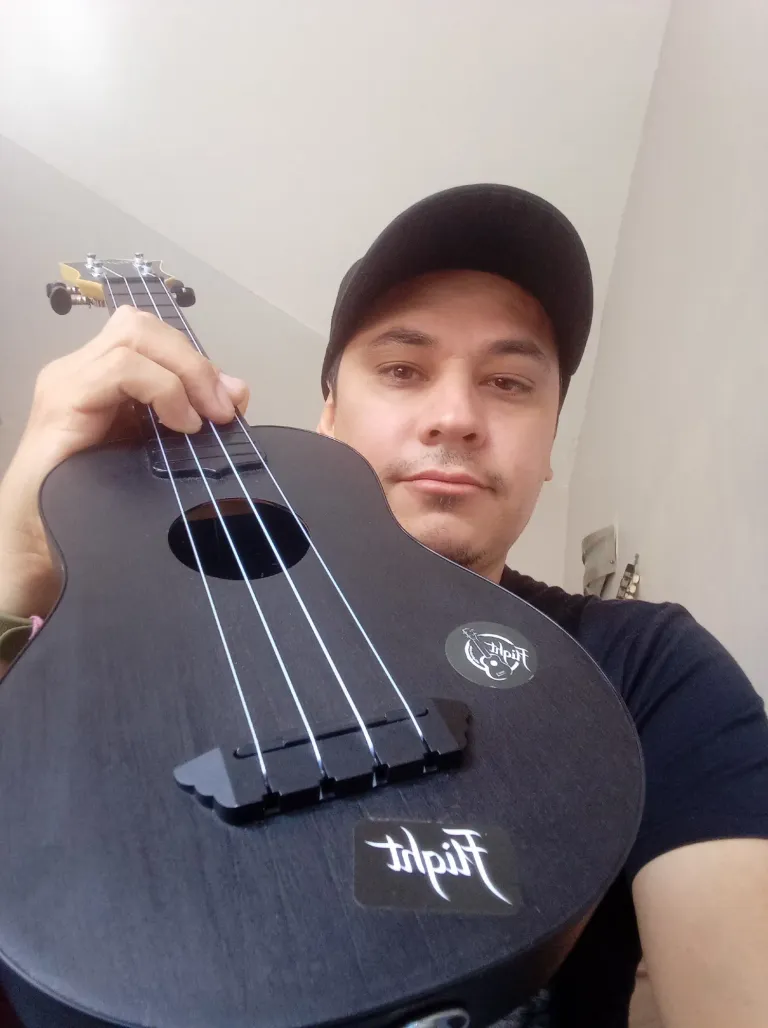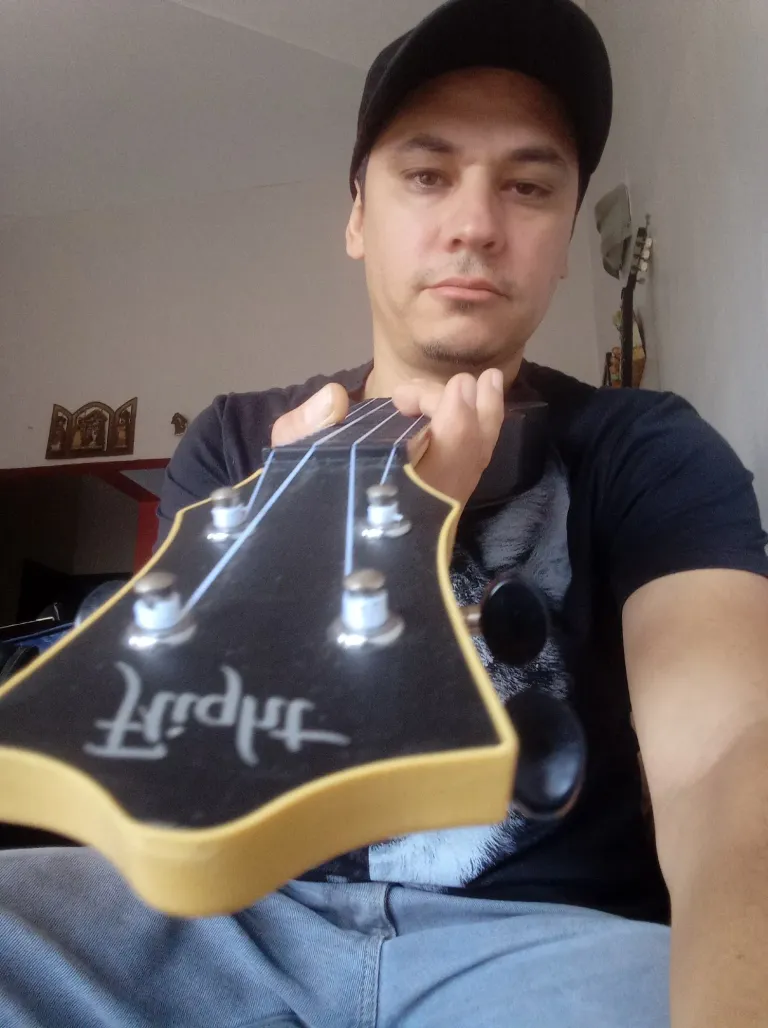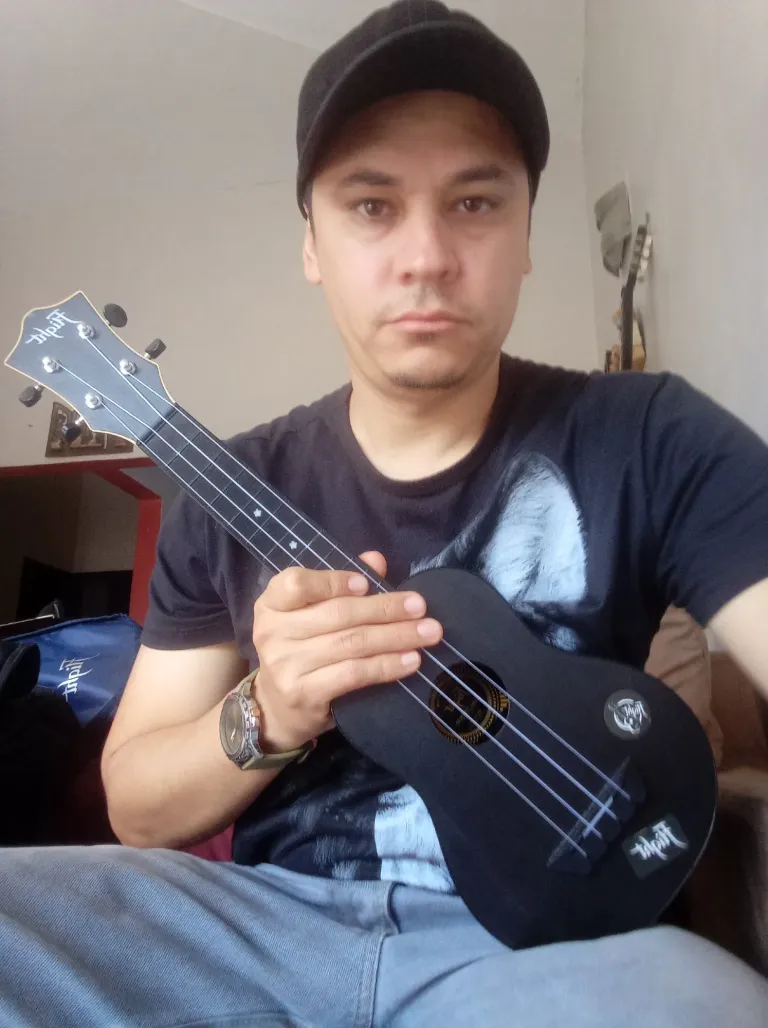🎸 Black Strings, Sweet Surprise 🎶




🎶 I'm about to buy a black ukulele that, beyond its eye-catching aesthetics, has a sonic personality that’s got me truly intrigued. It’s electroacoustic, which means I can play it just like any acoustic instrument, but also plug it into an amp and experiment with effects. And while it may look like a cute toy (or even a funny one), its sound has character.
What’s curious is that its tuning is very similar to the Venezuelan cuatro, just one tone lower. The cuatro is typically tuned A–D–F#–B, while the standard ukulele uses G–C–E–A. But what really caught my attention was the order of the strings: the ukulele uses reentrant tuning, meaning the lowest-pitched string isn’t at the end like with most instruments, but in the middle. This creates a very particular sonority, with chords that sound sweeter or even more “closed” harmonically.
The chords sound different—not just because of the tuning, but because of how the registers are distributed. The result is a sound that doesn’t resemble the cuatro or the guitar, but something more intimate, more playful.
And then there’s the color: deep black, with white strings. In my country, that instantly brings up associations with rock, with the alternative, with the rebellious. But this ukulele doesn’t shout—it whispers. It has presence, sure, but also tenderness.
(Translate by copilot)
🎸 Cuerdas, sombra, sorpresa 🎶
🎶 Estoy a punto de comprar un ukelele negro que, más allá de su estética llamativa, tiene una personalidad sonora que me tiene intrigado. Es electroacústico, lo que significa que puedo tocarlo como cualquier acústico, pero también conectarlo a un amplificador y explorar efectos. Y aunque parece un juguete tierno (o incluso chistoso), su sonido tiene carácter.
Lo curioso es que su afinación es muy parecida al cuatro venezolano, solo que un tono más abajo. El cuatro suele afinarse A–D–F#–B, mientras que el ukelele estándar va en G–C–E–A. Pero lo que realmente me llamó la atención fue el orden de las cuerdas: el ukelele usa una afinación reentrante, donde la cuerda más grave no está al final como en la mayoría de los instrumentos, sino en el medio. Esto crea una sonoridad muy particular, con acordes que suenan más dulces o incluso más “cerrados” armónicamente.
Los acordes suenan distintos, no solo por la afinación, sino por cómo están distribuidos los registros. El resultado es un sonido que no se parece ni al cuatro ni a la guitarra, sino a algo más íntimo, más juguetón.
Y luego está el color: negro profundo, con cuerdas blancas. En mi país, eso automáticamente se asocia con el rock, con lo alternativo, con lo rebelde. Pero este ukelele no grita—susurra. Tiene presencia, sí, pero también ternura.
(Traducido por Copilot)
For the best experience view this post on Liketu